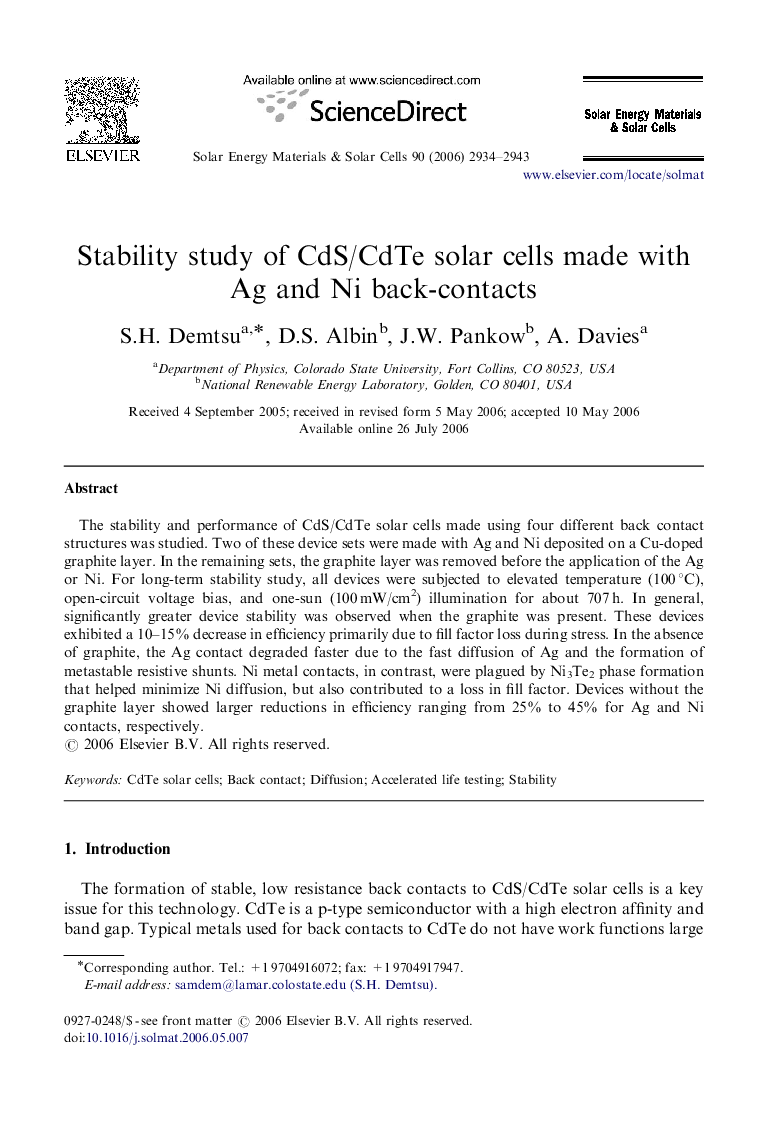| Article ID | Journal | Published Year | Pages | File Type |
|---|---|---|---|---|
| 81216 | Solar Energy Materials and Solar Cells | 2006 | 10 Pages |
The stability and performance of CdS/CdTe solar cells made using four different back contact structures was studied. Two of these device sets were made with Ag and Ni deposited on a Cu-doped graphite layer. In the remaining sets, the graphite layer was removed before the application of the Ag or Ni. For long-term stability study, all devices were subjected to elevated temperature (100 °C), open-circuit voltage bias, and one-sun (100 mW/cm2) illumination for about 707 h. In general, significantly greater device stability was observed when the graphite was present. These devices exhibited a 10–15% decrease in efficiency primarily due to fill factor loss during stress. In the absence of graphite, the Ag contact degraded faster due to the fast diffusion of Ag and the formation of metastable resistive shunts. Ni metal contacts, in contrast, were plagued by Ni3Te2 phase formation that helped minimize Ni diffusion, but also contributed to a loss in fill factor. Devices without the graphite layer showed larger reductions in efficiency ranging from 25% to 45% for Ag and Ni contacts, respectively.
